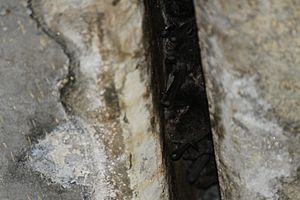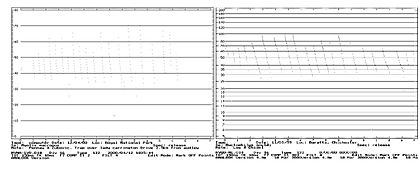Myotis macropus facts for kids
Quick facts for kids Southern myotisLarge-footed myotis |
|
|---|---|
 |
|
| roosting under a bridge in Termeil (New South Wales, Australia) |
|
| Conservation status | |
| Scientific classification | |
| Genus: |
Myotis
|
| Species: |
macropus
|
The southern myotis (Myotis macropus), also called the large-footed myotis, is a type of vesper bat. These bats are known for their mouse-like faces. It's one of only two "fishing" bats found in Australia. It catches its food by dragging its special feet along the water's surface. It eats small water creatures and fish.
Contents
Where the Southern Myotis Lives
The southern myotis bat lives along the east coast of Australia. You can find it from south-east Queensland down to New South Wales and Victoria. Some have also been seen along the coasts of other parts of Australia.
In the 1970s, these bats were found west of the Great Dividing Range. They were seen near the Murray River in a place called Boomanoomana State Forest. More recently, bats were found along the Murrumbidgee River near Hay. Their calls have also been heard near the Murray River close to Deniliquin.
Scientists think these bats might live in even more places than we know. This is because not many surveys have looked for them in inland water areas.
Protecting the Southern Myotis
The southern myotis is listed as a threatened species in New South Wales. This means it needs protection.
The bat's homes are at risk because of dirty water and more cities being built. These changes can make it harder for the bats to find good places to live near water. The southern myotis is also sensitive to pollution from heavy metals. These metals can build up in their bodies over time.
What the Southern Myotis Looks Like
The southern myotis is a 'vesper bat', which means it looks a bit like a mouse. It has small, round ears. But its most special feature is its big feet!
Its feet are at least 8 millimeters long. They are perfect for dragging through the water. Its toes are spread wide, and it has long, hook-like claws. Like all bats, its knees bend backward. This helps the bat scoop up prey from the water and bring it to its mouth while flying.
The fur on its back is dark-grey to reddish-brown. Its belly is a lighter color. Its wings can spread about 28 centimeters wide. This bat usually weighs up to 15 grams, which is about the same as a few coins.
Southern Myotis Habitat
This bat likes to live in places that are humid, meaning they have a lot of moisture in the air. They can be found at heights of up to 840 meters above sea level.
What the Southern Myotis Eats
The southern myotis uses echolocation to find its food. This is like using sound waves to see. They eat both water creatures and land insects.
Scientists have studied their droppings to see what they eat. Their diet includes fish, Hymenoptera (like ants and bees), Chironominae (non-biting midges), mosquitoes, Lepidoptera (mostly moths), beetles, and water boatmen (Notonectidae and Corixidae).
Southern Myotis Behavior and Reproduction
Echolocation and Calls

The southern myotis has a unique call that sounds very straight or "linear." The call starts at a high frequency, between 70 and 80 kilohertz (kHz). Then it drops down to between 35 and 40 kHz. In the middle of a full call, there's often a "kink" or bend around 50 kHz. This kink can happen again before the call ends.
Their call is similar to that of another bat, the Nyctophilus, which can sometimes cause confusion. Unlike some other bats, the southern myotis's call doesn't change much from one region to another.
Maternity Colonies
Female bats often gather in groups called maternity colonies. This is where they raise their young.
Emergence Behavior
This section describes how bats leave their roosts to hunt.
Images for kids



